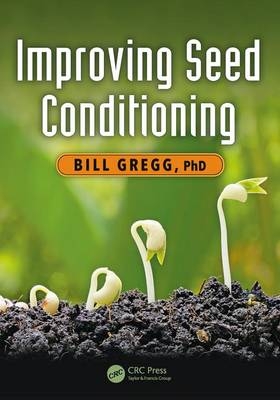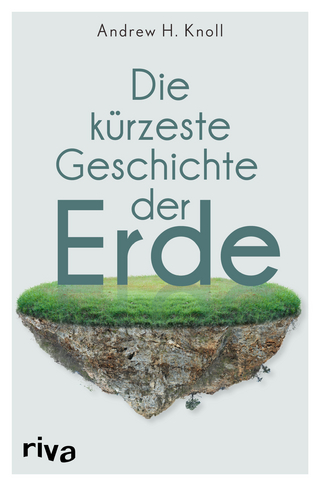
Improving Seed Conditioning
CRC Press (Verlag)
978-1-138-03254-5 (ISBN)
Much effort has been spent in developing seed technology so as to produce high quality seed, but performance of seed conditioning by maximizing the operator’s knowledge of getting the best performance from each of his machines has not been carefully and completely developed. Improving Seed Conditioning focuses on teaching the conditioning plant operator details of each machine and how to get maximum performance from it in terms of operating efficiency, maximum removal of undesirable particles, and minimum loss of good seed.
Organized in a manner that focuses on the specific machine models installed in each operator’s specific plant, this manual is set up to be used as text material in training classes or as a guide for operators employed by seed companies.
Bill Gregg holds a B.S., M.S. and Ph.D. in Agronomy Seed Technology. He has held positions of leadership in developing, managing and operating seed technology programs, training personnel and guiding operations at Mississippi State University, Washington State University, and Auburn University in the U.S.A., and as a consultant and advisor in various aspects of seed improvement, seed industry development, personnel development, seed promotion to farmers, in approximately 90 countries in programs sponsored by various national government and private sector agencies, and international development programs. In Seed Conditioning, he worked with equipment manufacturers in research and development of machines, and manufacturing of machines. He worked in actual conditioning of seed of many crops. He trained operators in seed conditioning. He worked in maintenance and repair of seed conditioning machines. He designed and built/installed seed conditioning plants worldwide, probably more plants than any other person worldwide. In many countries and many plants, he examined problems in seed conditioning and developed solutions. He has a significant number of publications on various aspects of seed conditioning. He is widely known jokingly as “Mr. Seed Conditioning." As a measure of his status, he has been included in Who’s Who in the South and Southwest of the USA, Who’s Who in America and Who’s Who in the World. In 2000 and 2001, the International Biographical Centre of Cambridge, England, selected him as International Man of the Year in Recognition of his services to the international seed industry.
Acknowledgment
Introduction
Chapter 1 What seed conditioning is and does
Chapter 2 Seed conditioning plant staff and contract growers
Chapter 3 Seed conditioning plant location
Chapter 4 Seed conditioning plant area
Chapter 5 Essential utilities
Chapter 6 Conditioning plant facilities
Chapter 7 Raw (nonconditioned) seed
Chapter 8 Moving raw seed into conditioning
Chapter 9 Conditioning
Chapter 10 Support operations
Chapter 11 Seed conditioning principles
Chapter 12 Waste products
Chapter 13 Sanitation and pest/insect control
Chapter 14 Conditioning equipment layout
Chapter 15 Receiving pit
Chapter 16 Bucket elevator characteristics
Chapter 17 Bucket elevator operation
Chapter 18 Vibrating conveyor characteristics
Chapter 19 Vibrating conveyor operation
Chapter 20 Horizontal belt conveyor characteristics
Chapter 21 Horizontal belt conveyor operation
Chapter 22 Inclined belt conveyor characteristics
Chapter 23 Inclined belt conveyor operation
Chapter 24 Drag chain conveyor characteristics
Chapter 25 Drag chain conveyor operation
Chapter 26 Airlift elevator characteristics
Chapter 27 Airlift elevator operation
Chapter 28 Ear corn conveyor characteristics
Chapter 29 Ear corn conveyor operation
Chapter 30 Corn (maize) sheller characteristics
Chapter 31 Corn sheller operation
Chapter 32 Scalper (precleaner) characteristics
Chapter 33 Scalper operation
Chapter 34 Debearder characteristics
Chapter 35 Debearder operation
Chapter 36 Huller-scarifier characteristics
Chapter 37 Huller-scarifier operation
Chapter 38 Air-screen cleaner characteristics
Chapter 39 Screens
Chapter 40 Screen selection
Chapter 41 Air-screen cleaner operation
Chapter 42 Cylinder separator characteristics
Chapter 43 Cylinders
Chapter 44 Cylinder separator operation
Chapter 45 Disc separator characteristics
Chapter 46 Discs
Chapter 47 Disc separator operation
Chapter 48 Gravity separator characteristics
Chapter 49 Gravity separator operation
Chapter 50 Stoner characteristics
Chapter 51 Stoner operation
Chapter 52 Pneumatic separator characteristics
Chapter 53 Pneumatic separator operation
Chapter 54 Aspirator characteristics
Chapter 55 Aspirator operation
Chapter 56 Spiral separator characteristics
Chapter 57 Spiral separator operation
Chapter 58 Width and thickness separator characteristics
Chapter 59 Width and thickness separator operation
Chapter 60 Roll mill characteristics
Chapter 61 Roll mill operation
Chapter 62 Color separator characteristics
Chapter 63 Color separator operation
Chapter 64 Magnetic separator characteristics
Chapter 65 Magnetic separator operation
Chapter 66 Electrostatic separator characteristics
Chapter 67 Electrostatic separator operation
Chapter 68 Seed treater characteristics
Chapter 69 Seed treater operation
Chapter 70 Bagger-weigher characteristics
Chapter 71 Bagger-weigher operation
Chapter 72 Bag closer characteristics
Chapter 73 Bag closer operation
Chapter 74 Determining seed conditioning requirements
Chapter 75 Determining conditioning requirements for a specific separation problem
Chapter 76 Determining sequence to set up, adjust, and operate conditioning machines
Chapter 77 Selected machine adjustment sequence
Chapter 78 Special packaging machines
Completion of the study program
Certificate of Master Seed Conditioner
| Erscheinungsdatum | 06.05.2017 |
|---|---|
| Zusatzinfo | 61 Tables, black and white; 1 Illustrations, black and white |
| Verlagsort | London |
| Sprache | englisch |
| Maße | 178 x 254 mm |
| Gewicht | 810 g |
| Themenwelt | Naturwissenschaften ► Geowissenschaften ► Geologie |
| Weitere Fachgebiete ► Land- / Forstwirtschaft / Fischerei | |
| ISBN-10 | 1-138-03254-9 / 1138032549 |
| ISBN-13 | 978-1-138-03254-5 / 9781138032545 |
| Zustand | Neuware |
| Haben Sie eine Frage zum Produkt? |
aus dem Bereich


